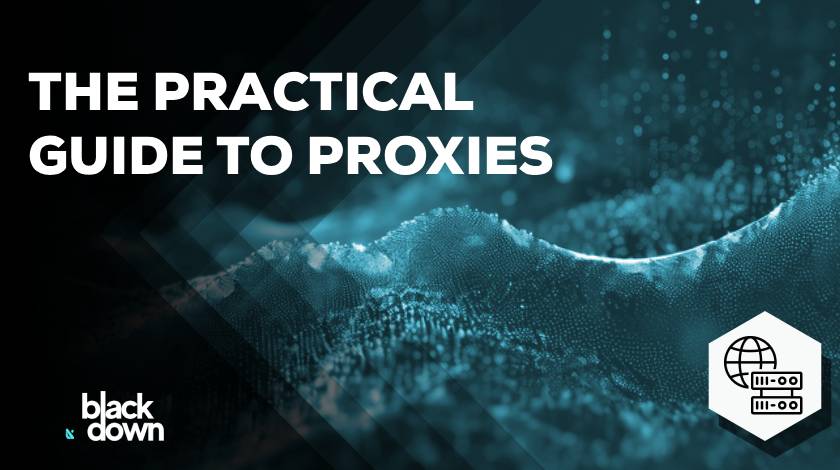Modern products are built and tested across regions, devices, and network conditions; precisely where reality diverges from the lab. Pages render differently on mobile networks, app flows change by location, and automated defenses treat some datacenter IPs as suspicious. If you’ve reached this stage, you’re likely comparing options and evaluating a dependable proxy site to introduce mobile and residential-like perspectives into your workflows without reinventing your stack.
What a proxy actually does (and why mobile/residential context matters)
At its simplest, a proxy routes your traffic through an intermediary IP so the destination sees that IP instead of yours. That sounds straightforward, but the source of the IP makes a big difference to how websites and apps treat your requests. Datacenter IPs are fast and inexpensive, yet more easily flagged by anti-abuse systems. Residential IPs originate from consumer ISPs and resemble everyday home traffic. Mobile IPs come from cellular networks behind carrier-grade NAT, which often align most closely with how real people connect on the go.
That distinction matters for authenticity and signal quality. When you need to understand how a checkout, onboarding, ad placement, or geo-specific feature behaves for actual users, the network path and IP reputation shape what you observe.
Legitimate, high-value use cases you can stand behind
Teams across product, growth, marketing, and support use proxies to create realistic, repeatable testing conditions, without poking production with obviously synthetic fingerprints.
- Product QA and localization: Validate that prices, languages, and region-locked content behave as intended in different cities and carriers.
- Ad verification and brand safety: Confirm that creatives render where promised, catch cloaking, and ensure placement quality matches policy.
- Search and marketplace auditing: Observe ranking, availability, and promotions across locales without skewing results via datacenter signatures.
- Support & incident reproduction: Recreate “only on my phone” reports by matching mobile network conditions and session patterns.
Used with care and governance, proxies let you measure what customers actually encounter, then fix issues proactively.
Build vs. buy: hiring developers or adopting a managed network?
Once you know you need a proxy capability, you face a strategic choice. Do you assemble a team to build an in-house platform (modems/SIMs, rotation logic, orchestration, observability), or do you adopt a managed service that already offers mobile/residential pools, session control, and SLAs?
- Build in‑house: full control over hardware/firmware/routing; strong for strict data‑custody. Trade‑offs: lead time, maintenance, carrier relations, and hiring infra‑minded engineers.
- Managed service: days to value with mobile/residential pools, session control, and SLAs. You still own governance and tagging; the provider handles capacity and failover. For most organizations piloting proxy use for the first time, managed is the pragmatic on-ramp.
Advantages of managed mobile/residential proxies (and the few downsides to plan for)
The practical benefits show up quickly: broad geo and carrier choice for realistic testing, reliable “sticky” sessions for multi-step flows (e.g., OTP -> profile -> checkout), and support when peak releases stress capacity. SLAs and analytics make it easier to justify the spend to stakeholders who track outcomes.
Downsides are usually operational, not existential. Mobile exits cost more than datacenter IPs; mitigate by right-sizing concurrency and reusing sessions efficiently. Proxies don’t equal real devices; pair mobile IP tests with periodic handset checks. And every new tool has a learning curve; vendor enablement and a short internal playbook (“how to rotate,” “how to pin a session,” “how to tag traffic”) keep adoption smooth. A positive article should still be honest: these are manageable frictions with clear mitigations.
Ethics and compliance first: keep your program durable
A sustainable proxy practice rests on governance. Establish acceptable use (QA, research, verification) and prohibit anything unlawful or against partners’ terms. Apply least-privilege access, per-user credentials, and logs that link actions to people and purpose. Minimize data collection; encrypt in transit and at rest; set retention windows that fit your obligations. With those basics, legal and security teams become allies and your program remains credible as it scales.
How to evaluate a provider without future rework
Professional teams front-load evaluation with a structured pilot. The goal isn’t a perfect RFP; it’s evidence that the network’s behavior matches your needs today and six months from now.
- Session control: Can you pin a sticky session for long flows, rotate on failure, and set TTLs?
- Geo/carrier depth: Do you have cities and carriers that map to your roadmap, not just country-level flags?
- Performance stability: What are typical latency and variance for your core geos during peak hours?
- APIs & tooling: Is auth straightforward? Can you manage rotation, concurrency, and tagging programmatically?
- Support transparency: Do you receive real incident communications, changelogs, and usage analytics your stakeholders understand?
You’ll also want clarity on KYC, acceptable-use enforcement, and how abuse complaints are handled. Reputable providers make this simple to verify.
A realistic “start small, win fast” plan
You don’t need to overhaul your stack to benefit. Start with one flow that matters to the business and can be measured end-to-end. For instance, test new-user sign-up on mobile networks across three priority cities; define success as consistent conversion rates and lower time-to-reproduce support issues. Tag proxy traffic so dashboards can compare proxy vs. non-proxy cohorts. Once the first win is clear, expand to ad verification in target geos or marketplace auditing for key SKUs.
A plan like this does two things: it proves practical value (not just “interesting lab results”) and it creates internal champions who can teach best practices to others.
Where trusted brands and good tooling intersect
Regardless of which network you use, the rest of the toolchain matters. Device farms or physical phones cover rendering and sensor quirks. Observability (from platforms like Datadog or Grafana in many stacks) ties proxy sessions to application metrics. CI/CD connects proxy checks to release hygiene. And across all of it, common-sense engineering habits (feature flags, canaries, and graceful fallbacks) reduce the need for emergency scrambles when a partner changes their risk model.
You’ll also see the benefits ripple beyond pure QA. Marketing avoids wasted spend by catching cloaked placements early. Growth teams verify localization and inventory logic before launch days. Support reproduces “edge” issues in hours instead of days. The most visible win, however, is calmer releases: fewer surprises in production and a tighter feedback loop when something does slip.
Hiring developers: when it’s truly worth it
If you’re tempted to hire a team to build an internal proxy platform, set clear thresholds that justify the investment. Consider scale (concurrency and throughput), coverage (how many regions/carriers), and compliance (data residency and audit depth). If you already operate at this scale and have multi-year requirements, an in-house build can reduce per-unit cost and offer fine-grained control. It also creates a new product to maintain: firmware updates, carrier changes, and capacity planning don’t stop. Many organizations start with a managed network, learn what “good” looks like, and only then decide whether bespoke engineering beats opex over the long term.
Practical pitfalls and how great teams avoid them
Three mistakes are common. First, vague goals (“make mobile better”) yield unfocused tests; fix this by setting tight, verifiable objectives. Second, over-rotation breaks stateful flows; prefer sticky sessions for multi-step journeys and rotate intentionally on error. Third, proxy-only testing misses real-device nuances; pair your proxy program with periodic checks on iOS/Android hardware. Mature teams write these rules down, share sample configs, and review outcomes in sprint rituals so improvements stick.
A human-centered way to scale confidence
At the end of the day, proxies are a means to clarity. They reduce the distance between your team’s intent and your users’ reality. When you can view your product the way people actually experience it (on congested cellular networks, in different languages, under varying risk models) your decisions get better. Releases become steadier. Support becomes faster. And your colleagues trust the data because it reflects the world outside the office network.
If you’re ready to add that realism without months of procurement or custom engineering, begin with a careful pilot on a reliable proxy site, teach the basics to one or two cross-functional squads, and measure outcomes in terms stakeholders already track: conversion, time-to-reproduce, time-to-fix. When the early wins are visible and repeatable, roll the practice out in stages and keep the scope tied to real objectives.
A thoughtful proxy program doesn’t replace craftsmanship; it multiplies it by helping developers, QA, analysts, and marketers ship with confidence on timelines the business can trust. If you want realism without heavy lifting, evaluate reputable managed providers against the checklist above and your compliance requirements. Keep usage scoped, measured, and documented as you expand.
Thomas Hyde
Related posts
Popular Articles
Best Linux Distros for Developers and Programmers as of 2025
Linux might not be the preferred operating system of most regular users, but it’s definitely the go-to choice for the majority of developers and programmers. While other operating systems can also get the job done pretty well, Linux is a more specialized OS that was…
How to Install Pip on Ubuntu Linux
If you are a fan of using Python programming language, you can make your life easier by using Python Pip. It is a package management utility that allows you to install and manage Python software packages easily. Ubuntu doesn’t come with pre-installed Pip, but here…











